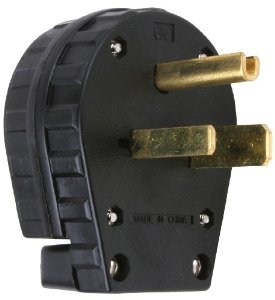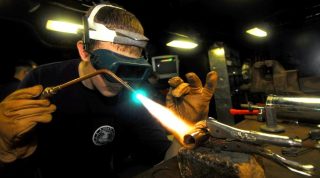If you’re looking for basic welding advice or you’re just curious how long it takes to learn welding then sit back, grab a cup of coffee, and keep on reading for some eye opening information.
I want to share with you how YOU can start welding quickly & easily.
Most beginners who want to learn to weld online find it very helpful to have a video instructor, just like in a real life classroom setting.
So, How Long Does It Take To Learn Basic Welding?
You’re probably going to be disappointed at my answer, because like everything that all depends on how much time and effort you put into learning how to weld.
I know, you wanted an exact time frame…
But, since I might have left you hanging with my response to the question “how long does it take to learn welding”, I’m going to give you a little golden nugget that could save you tons of time.
Here is the BIG secret that will put you ahead of all the rest of those beginners out there that are struggling to make good welds…
Forget about all the different welding processes out there that are probably confusing you, and stick with the one welding process that will get you welding the fastest and easiest. MIG Welding.
Start Your Basic Welding Training With A MIG Welder
This one tip is so important for you to understand when you’re just getting started.
I want to guide you in the right direction here, so forget about stick welding or TIG welding for the moment.
The reason I highly recommend you to get started with a MIG welder is because you can take it right out of the box and lay a clean and solid weld bead right away.
You can’t expect your basic welding techniques to be great the first time, but at least you can start using it right away.
Later in this post I’m going to reveal some mig welding basics, mig welding tips, and mig welding techniques to help you get started.
First, let me explain why you should stay away from Stick welding and TIG welding if you’re a complete beginner who wants to do hobby welding.

Don’t get me wrong, TIG welding and Stick welding will do a great job with basic welding projects… it’s just the learning curve is much higher for beginners.
Like I said before, learning to weld can take you a long time, or a short time. It all depends on how much you practice.
Just buying a nice welder won’t do the trick for you. You’ve got to dedicate some time, although it’s not a whole lot of time when using a MIG welder, but it’s necessary to practice.
3 Reasons Why I Don’t Recommend Basic Welding With A Stick Welder For Beginners
- It can be difficult to start an arc: When you start an arc with a stick welder it’s like lighting a match, and the welding rod can be jumping around everywhere that you don’t want it to be.
- It can be difficult to see the weld puddle: When you’re just starting out you will want a process where you can see what’s going on where the are meets the metal. It’s all about controlling the heat.
- It creates slag: Basic welding with a stick welder creates a slag coating that must be chipped away after the weld is layed down. MIG welding is just a much quicker process and it doesn’t produce slag.
I recommend you to stay away from stick welding just because it’s more difficult to pick up for beginners.
TIG Welding Is Not A Basic Welding Process
You don’t have to think hard about why I don’t recommend TIG welding as a beginners process. Usually, beginners course welding instructors will save TIG welding for the last semester because it’s advanced.
TIG welding is much more involved and takes a lot longer than MIG welding. Plus, it’s just not the best place to start out welding with.
Here’s 3 Reasons I Don’t Recommend TIG Welding For Beginners
- It’s slow: TIG welding produces the most beautiful welds of all the welding processes, but it’s slow and cumbersome.
- It take both hands, and 1 foot: When you TIG weld you have to hold the torch with one hand, dip the rod with the other hand, and control the voltage with a foot pedal. Not beginner friendly!
- They are expensive: TIG welders cost the most out of all the welding processes. Most beginners aren’t looking to pay what some of the TIG machines on the market cost.
You can see that it is definitely not a basic welding process, so my recommendation is to stay away from TIG until you’ve mastered MIG.
One process I haven’t mentioned yet it oxy acetylene welding. Now the oxy acetylene setup is the most versatile setup out of all the welding processes because you can cut, weld, braze, and bend using it.
This is a great process for beginners to learn as well because it teaches you heat control and how to manipulate the weld puddle. However, the process is extremely slow and that why it’s been replaced with arc welding processes.
So, the next best thing for beginners is the MIG welder.
Learning how to mig weld is fun, and easy. You can open your welder, put the welding wire in, and be welding right out of the box. Best of all, there are many MIG machines that hook right up to your 110 volt outlet.
No worrying about shocking yourself trying to change out your outlets.
Plus, MIG welds are extremely smooth and it hardly takes any effort to make a weld that looks like a veteran did it.
Here’s 3 Reasons Why I Think MIG Welding Is The Best Basic Welding Process For Beginners
- You can weld for a long time without stopping: Unlike using welding rods or filler rods that burn down, with a mig welder you put the roll of wire into the machine and you’re good to go.
- It doesn’t create slag: No slag means no beating with a hammer, and no smoke. You can lay a smooth weld bead down and be done with it.
- It’s simple to use: When mig welding you simply put the gun to the metal and pull the trigger. The arc start and you’re welding, which makes it super easy for any newbie to use.


